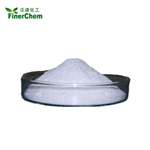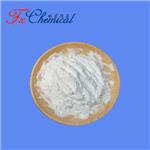Description
Benzyltrimethylammonium chloride is hygroscopic and soluble in water, ethanol, and butanol and slightly soluble in butyl phthalate and tributyl phosphate. It is widely used as a solvent for cellulose, a gelling inhibitor in polyester resins, a chemical intermediate, a paint dispersant, and an acrylic dyeing agent. It is also used in plant growth regulator compositions and synthetic processes.
Chemical Properties
white to light yellow crystal powder. soluble in water, aqueous solutions conduct electricity. It is hydrochloride salt of benzyltriethylammonium which acts as a phase-transfer catalyst in chemical reactions.
Uses
Benzyltriethylammonium chloride is used as a catalyst in the preparation of 2-phenylbutyronitrile from phenyl acetonitrile. It is involved in the Knoevenagel condensation of carbonyl compounds with active methylene compounds to give olefinic products. It acts as a phase transfer catalyst used in the alkylation reaction. It reacts with 1H-Pyridine-2-thione to get 2-Benzylsulfanyl-pyridine.
Preparation
Benzyltriethylammonium chloride synthesis: Add benzyl chloride, triethylamine and acetone into the reaction pot, and reflux at 63-64°C for 8 hours. Slowly lowered to 15°C, filtered, and the filter cake was washed with acetone and dried to obtain benzyltriethylammonium chloride. Yield 68.9%.
Application
Benzyltriethylammonium chloride is a lipophilic phase-transfer catalyst that can be used in phase-transfer catalysis (PTC) to catalyze polycondensation reactions to form high molecular weight polymers under bi-phasic conditions.
It can also be used:
To activate hydroxyapatite and natural phosphate for use as a solid support for Knoevenagel condensation and Claisen-Schmidt condensation, respectively at room temperature and in the absence of a solvent.
To increase the efficiency of mCPBA oxidation of sulfonimine generated from arenesulfonamide and diethyl acetal of an aromatic aldehyde to form 2-sulfonyloxaziridines.
In combination with antimony(V) chloride to form a catalytic system for the Friedel-Crafts acylation reactions of arenes with acyl and sulfonyl chlorides.
Safety Profile
Poison by intravenous route.When heated to decomposition it emits toxic vapors ofNOx and Cl.
Toxicology
Benzyltrimethylammonium chloride was not mutagenic in S. typhimurium strain TA97, TA98, TA100, or
TA1535, with or without S9 metabolic activation enzymes. However, significant increases in the frequency
of micronucleated normochromatic erythrocytes were found in the peripheral blood of male and female mice
administered benzyltrimethylammonium chloride by gavage for 13 weeks.
Based on the mortality observed in the 16-day and 13-week studies, rats and mice appeared to be equally
sensitive to benzyltrimethylammonium chloride. The minimally toxic dose for rats and mice was estimated to
be 50 mg/kg.
Solubility in organics
sol acetone, alcohol, H2O, 1% aq. NaOH; insol ether, 20% aq. NaOH






